Exercises (1559)
Jumping on the spot with one leg (left) (jumping rope)
Power
Individual work

Stand upright on one leg (left), standing only on the front foot/ball of the foot, holding a skipping rope in your hands. Continuous one-legged hopping in place and simultaneous swinging of the rope (under the standing leg and overhead).
Attention:
Without putting down the heel (jumping on the ball of the foot/tips of the toes). Keep your upper body upright (tense your core).
Lighten:
Lower intensity (slower swing).
Harden:
Higher intensity (very fast jumping); additional weight (on the supporting leg).
Variant I:
Pull the tip of the foot towards the knee (bend the foot) with every jump.
Variant II:
Integrate jump forms: Double jumps, crossing your arms, tapping your heel on the floor, etc.
1 skipping rope
1 weight cuff/weight waistcoat ► to make the exercise more difficult (additional weight)
Bounce in place one-legged (left) ► one-leg hop
Power
Individual work
One-legged stand (left) on the balls of the feet with the knees slightly bent, arms bent in front of the body or supported on the hips. Continuous hopping in place (fast frequency) without putting your heels down (jumping off on your toes).
Attention:
Keep your upper body upright (tense your core).
Lighten:
Smaller/less intense jumps.
Harden:
Bigger/more intense jumps; additional weight (on your chest/shoulders, hold in your hands, in front of you).
Variation:
With each jump, pull the tips of your feet towards your knees (bend your feet).
1 weight cuff/weight vest/weight disc/(medicine) ball/sandbag/fighting backpack/2 dumbbells ► Make the exercise more difficult (additional weight)
Jumping in place one-legged (right) (jumping rope)
Power
Individual work
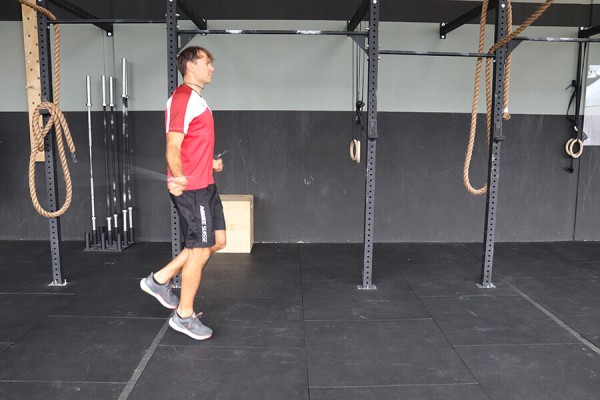
Stand upright on one leg (right), standing only on the front foot/ball of the foot, holding a skipping rope in your hands. Continuous one-legged hopping in place and simultaneous swinging of the rope (under the standing leg and overhead).
Attention:
Jump without putting your heel down (on the ball of your foot/tips of your toes). Keep your upper body upright (tense your core).
Lighten:
Lower intensity (slower swing).
Harden:
Higher intensity (very fast jumping); additional weight (on the supporting leg).
Variant I:
Pull the tip of the foot towards the knee (bend the foot) with every jump.
Variant II:
Integrate jump forms: Double jumps, crossing your arms, tapping your heel on the floor, etc.
1 skipping rope
1 weight cuff/weight waistcoat ► to make the exercise more difficult (additional weight)
Bounce in place one-legged (right) ► one-leg hop
Power
Individual work
One-legged stand (right) on the balls of the feet with the knees slightly bent, arms bent in front of the body or supported on the hips. Continuous hopping in place (fast frequency) without putting your heels down (jumping off on your toes).
Attention:
Keep your upper body upright (tense your core).
Lighten:
Smaller/less intense jumps.
Harden:
Bigger/more intense jumps; additional weight (on your chest/shoulders, hold in your hands, in front of you).
Variation:
With each jump, pull the tips of your feet towards your knees (bend your feet).
1 weight cuff/weight vest/weight disc/(medicine) ball/sandbag/fighting backpack/2 dumbbells ► Make the exercise more difficult (additional weight)
Indoor cycling
Power
Individual work
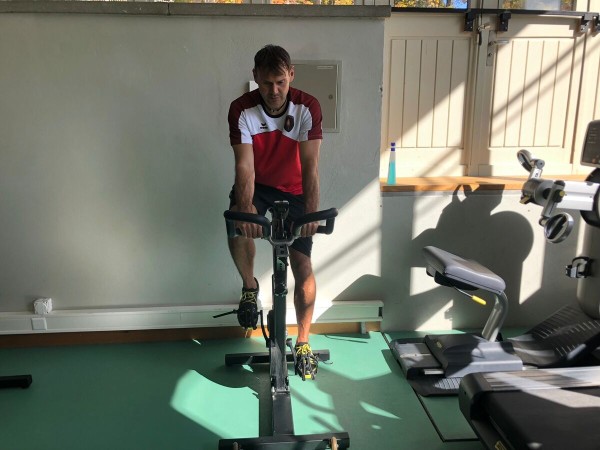
Indoor cycling involves cycling indoors, whereby the workout on the indoor bike is even slightly more efficient than cycling outside. Whether for burning fat, strengthening the cardiovascular system, ergo for health or for the muscles, training with the indoor bike offers a holistic workout and entails hardly any risks.
Variant:
Choose a constant basic speed or vary the intensity by constantly changing speed (interval training).
1 Fahrradergometer/Indoor-Bike/Spinning-Bike
Indoor Cycling (m: 10000m/10km - 240kal; w: 8000m/8km - 180kal)
Power
Individual work
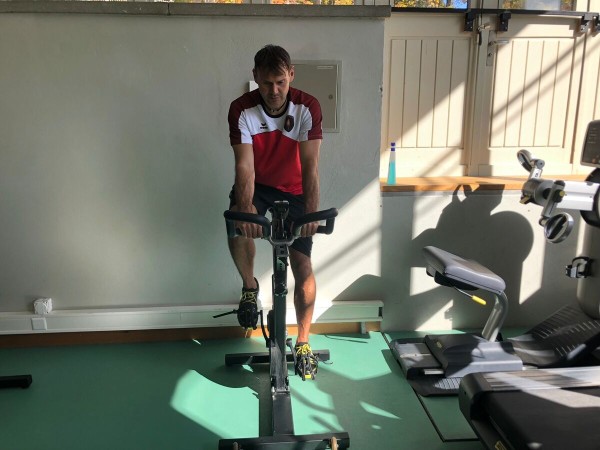
Indoor cycling involves cycling indoors, whereby the workout on the indoor bike is even slightly more efficient than cycling outside. Whether for burning fat, strengthening the cardiovascular system, ergo for health or for the muscles, training with the indoor bike offers a holistic workout and entails hardly any risks.
Variant:
Choose a constant basic speed or vary the intensity by constantly changing speed (interval training).
1 Fahrradergometer/Indoor-Bike/Spinning-Bike
Indoor Cycling (m: 1000m/1km - 24kal; w: 800m - 18kal)
Power
Individual work
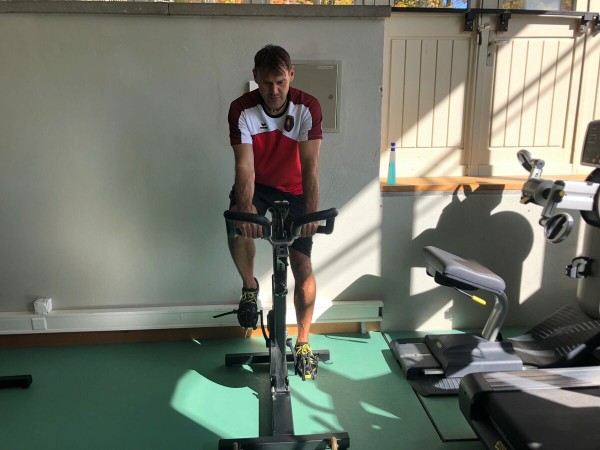
Indoor cycling involves cycling indoors, whereby the workout on the indoor bike is even slightly more efficient than cycling outside. Whether for burning fat, strengthening the cardiovascular system, ergo for health or for the muscles, training with the indoor bike offers a holistic workout and entails hardly any risks.
Variant:
Choose a constant basic speed or vary the intensity by constantly changing speed (interval training).
1 Fahrradergometer/Indoor-Bike/Spinning-Bike
Indoor Cycling (m: 1600m/1.6km/1 mile - 36kal; w: 1200m/1.2km - 27kal)
Power
Individual work
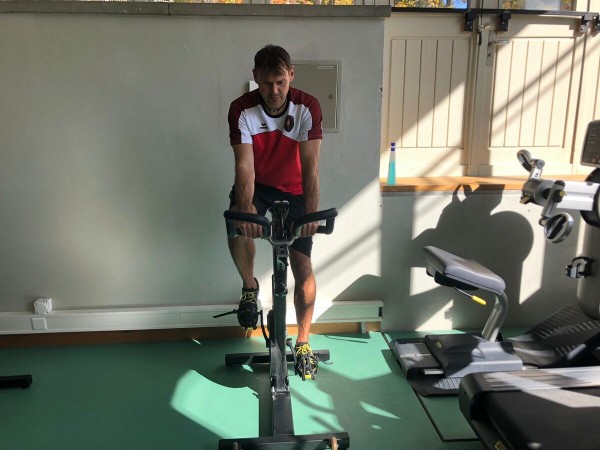
Indoor cycling involves cycling indoors, whereby the workout on the indoor bike is even slightly more efficient than cycling outside. Whether for burning fat, strengthening the cardiovascular system, ergo for health or for the muscles, training with the indoor bike offers a holistic workout and entails hardly any risks.
Variant:
Choose a constant basic speed or vary the intensity by constantly changing speed (interval training).
1 Fahrradergometer/Indoor-Bike/Spinning-Bike
Indoor Cycling (m: 2000m/2km - 48kal; w: 1600m/1.6km - 36kal)
Power
Individual work
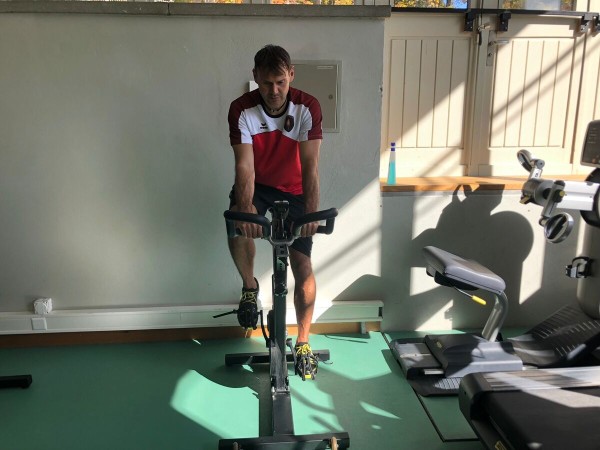
Indoor cycling involves cycling indoors, whereby the workout on the indoor bike is even slightly more efficient than cycling outside. Whether for burning fat, strengthening the cardiovascular system, ergo for health or for the muscles, training with the indoor bike offers a holistic workout and entails hardly any risks.
Variant:
Choose a constant basic speed or vary the intensity by constantly changing speed (interval training).
1 Fahrradergometer/Indoor-Bike/Spinning-Bike
Indoor Cycling (m: 2500m/2.5km - 60kal; w: 2000m/2km - 45kal)
Power
Individual work
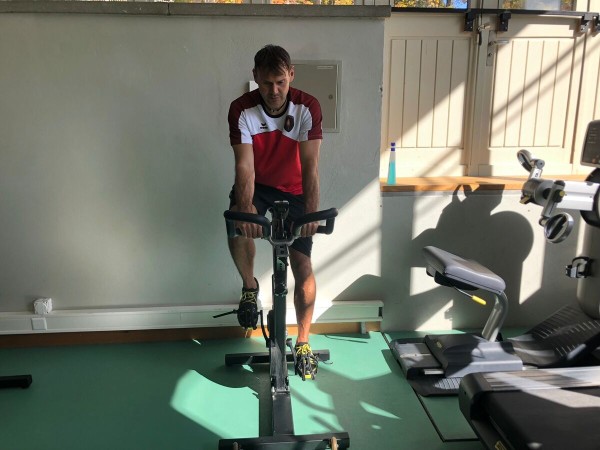
Indoor cycling involves cycling indoors, whereby the workout on the indoor bike is even slightly more efficient than cycling outside. Whether for burning fat, strengthening the cardiovascular system, ergo for health or for the muscles, training with the indoor bike offers a holistic workout and entails hardly any risks.
Variant:
Choose a constant basic speed or vary the intensity by constantly changing speed (interval training).
1 Fahrradergometer/Indoor-Bike/Spinning-Bike
Indoor Cycling (m: 250m - 6kal; w: 200m - 4kal)
Power
Individual work
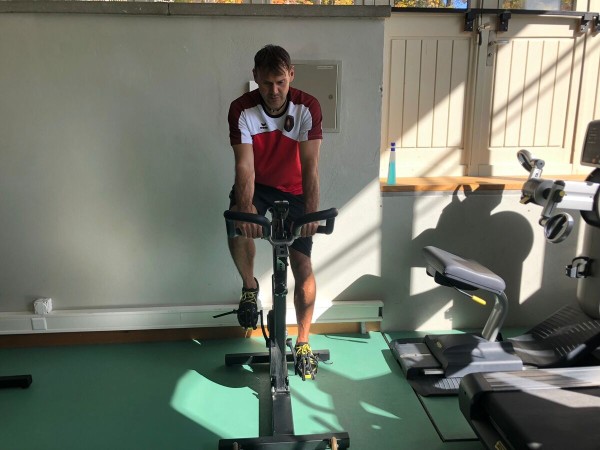
Indoor cycling involves cycling indoors, whereby the workout on the indoor bike is even slightly more efficient than cycling outside. Whether for burning fat, strengthening the cardiovascular system, ergo for health or for the muscles, training with the indoor bike offers a holistic workout and entails hardly any risks.
Variant:
Choose a constant basic speed or vary the intensity by constantly changing speed (interval training).
1 Fahrradergometer/Indoor-Bike/Spinning-Bike
Indoor Cycling (m: 4000m/4km - 96kal; w: 3200m/3.2km/2 Meile - 72kal)
Power
Individual work
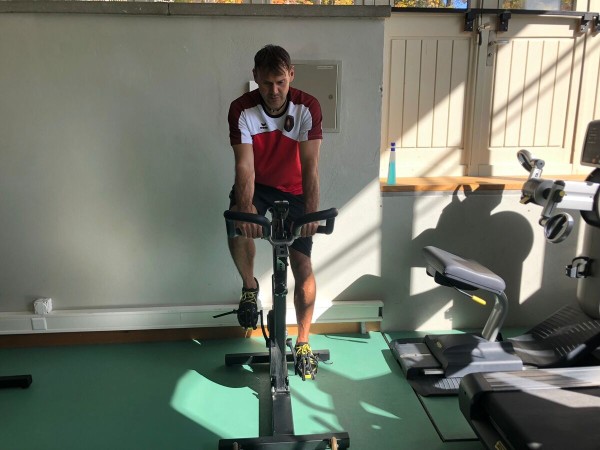
Indoor cycling involves cycling indoors, whereby the workout on the indoor bike is even slightly more efficient than cycling outside. Whether for burning fat, strengthening the cardiovascular system, ergo for health or for the muscles, training with the indoor bike offers a holistic workout and entails hardly any risks.
Variant:
Choose a constant basic speed or vary the intensity by constantly changing speed (interval training).
1 Fahrradergometer/Indoor-Bike/Spinning-Bike
Indoor Cycling (m: 500m - 12kal; w: 400m - 9kal)
Power
Individual work
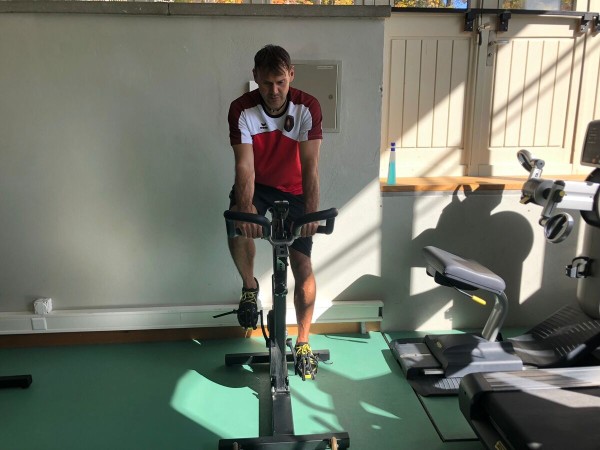
Indoor cycling involves cycling indoors, whereby the workout on the indoor bike is even slightly more efficient than cycling outside. Whether for burning fat, strengthening the cardiovascular system, ergo for health or for the muscles, training with the indoor bike offers a holistic workout and entails hardly any risks.
Variant:
Choose a constant basic speed or vary the intensity by constantly changing speed (interval training).
1 Fahrradergometer/Indoor-Bike/Spinning-Bike
Indoor Cycling (m: 750m - 18kal; w: 600m - 14kal)
Power
Individual work
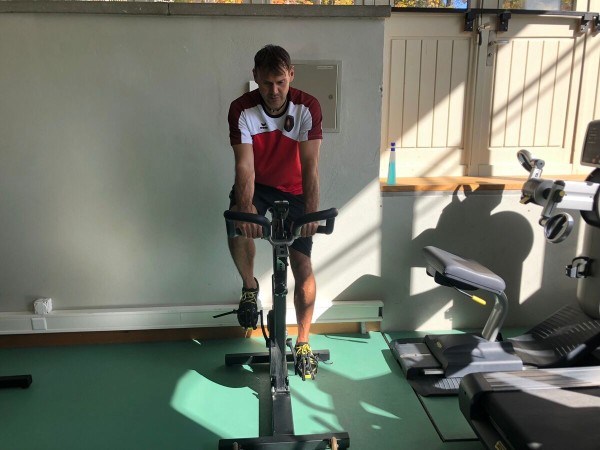
Indoor cycling involves cycling indoors, whereby the workout on the indoor bike is even slightly more efficient than cycling outside. Whether for burning fat, strengthening the cardiovascular system, ergo for health or for the muscles, training with the indoor bike offers a holistic workout and entails hardly any risks.
Variant:
Choose a constant basic speed or vary the intensity by constantly changing speed (interval training).
1 Fahrradergometer/Indoor-Bike/Spinning-Bike
Squat jump in push-up position
Power
Individual work
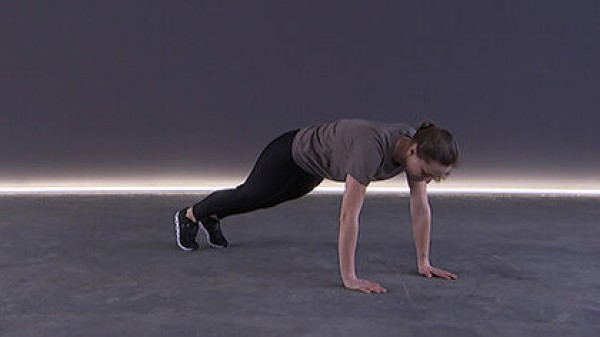
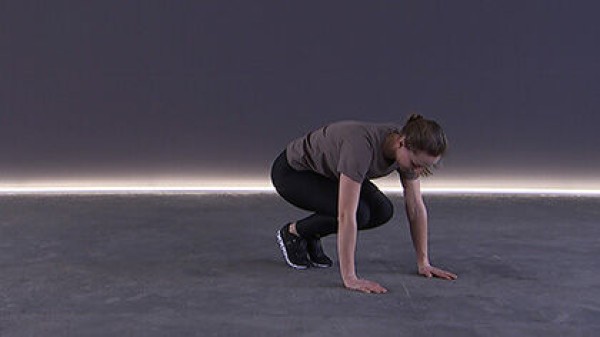
Push-up position (high support, face/look down), bend your legs during the jump (bring your knees between your arms) and stretch back out to the starting position for the next jump.
Attention:
Keep your upper body stable in the starting position (tense your stomach).
Lighten:
Just hold the basic position (push-up position); smaller jumps (bring your knees less forwards).
Harden:
Additional weight (on the legs); unstable base (for the arms).
2 weight cuffs ► to make the exercise more difficult (additional weight)
1 balance cushion/balance board ► to make the exercise more difficult (unstable surface)
Climbing on the rope
Power
Individual work
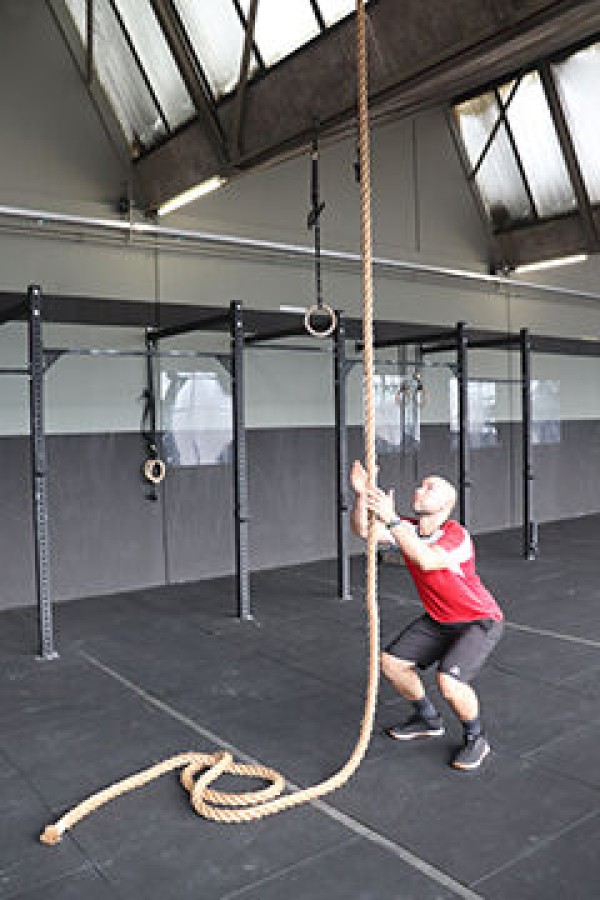
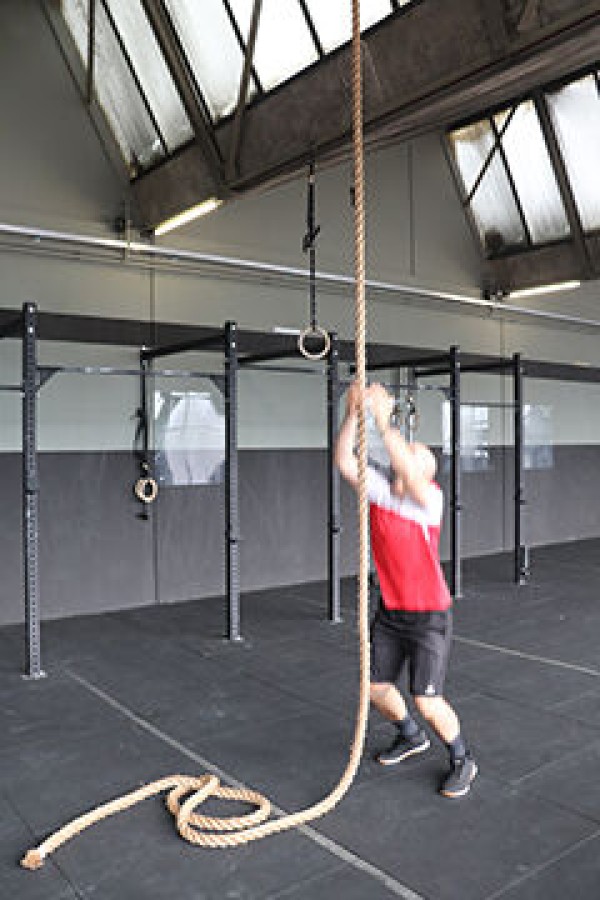
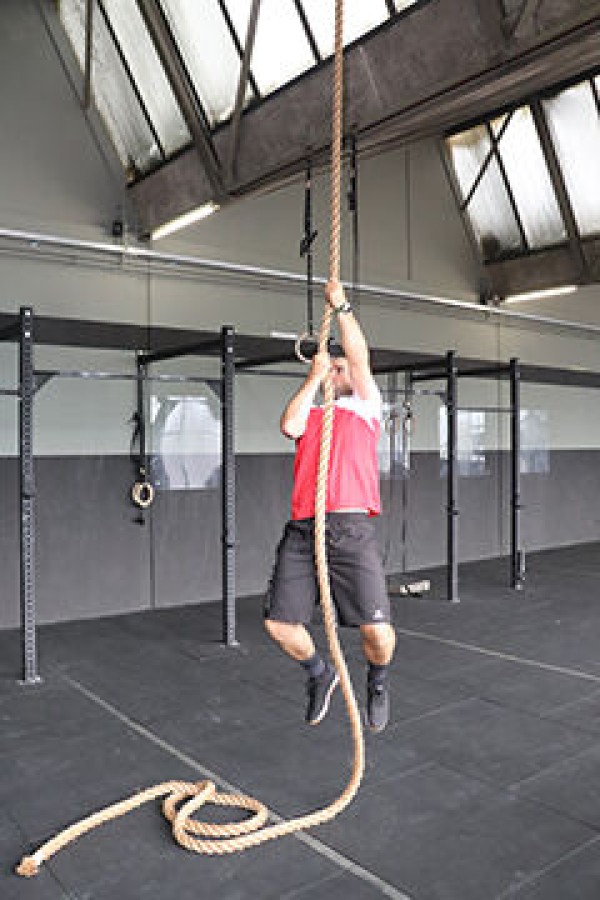
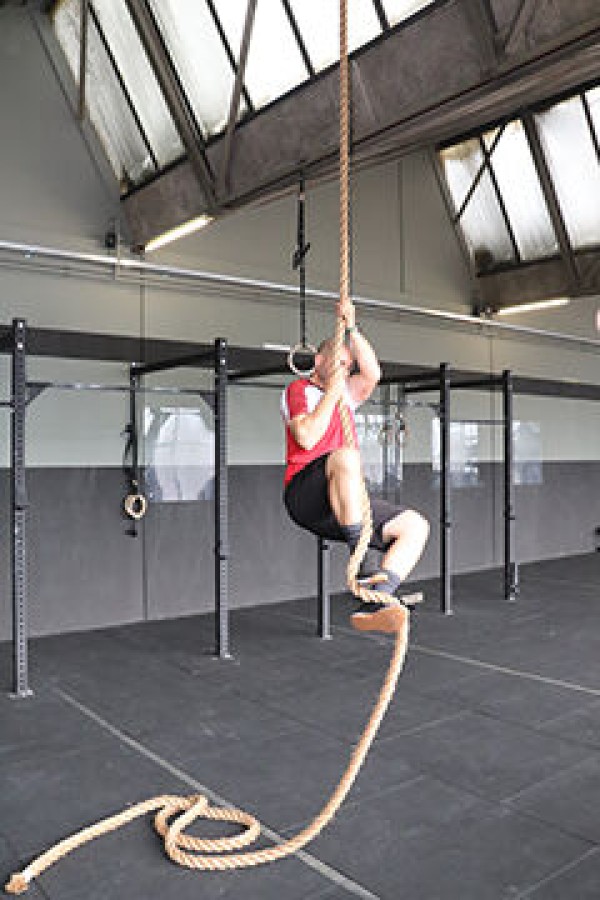
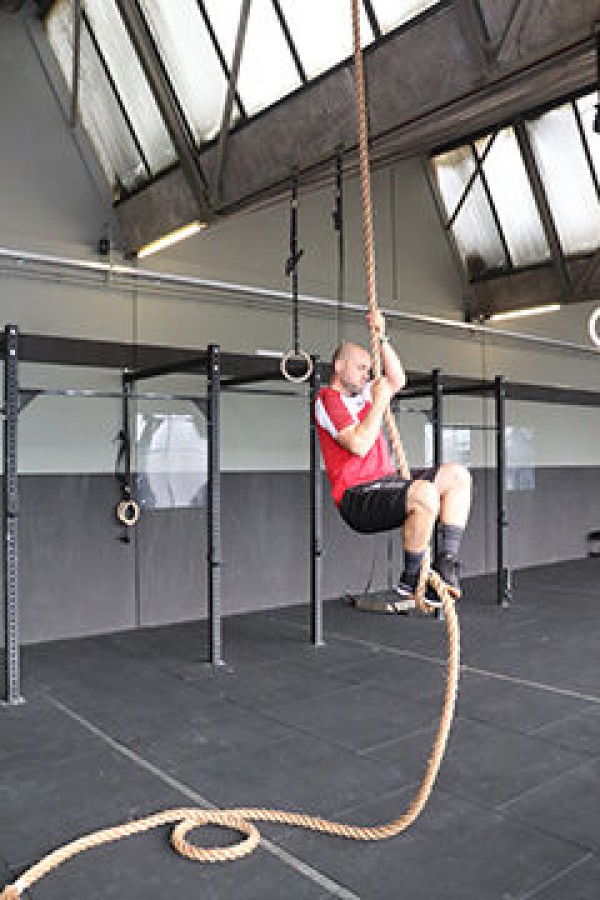
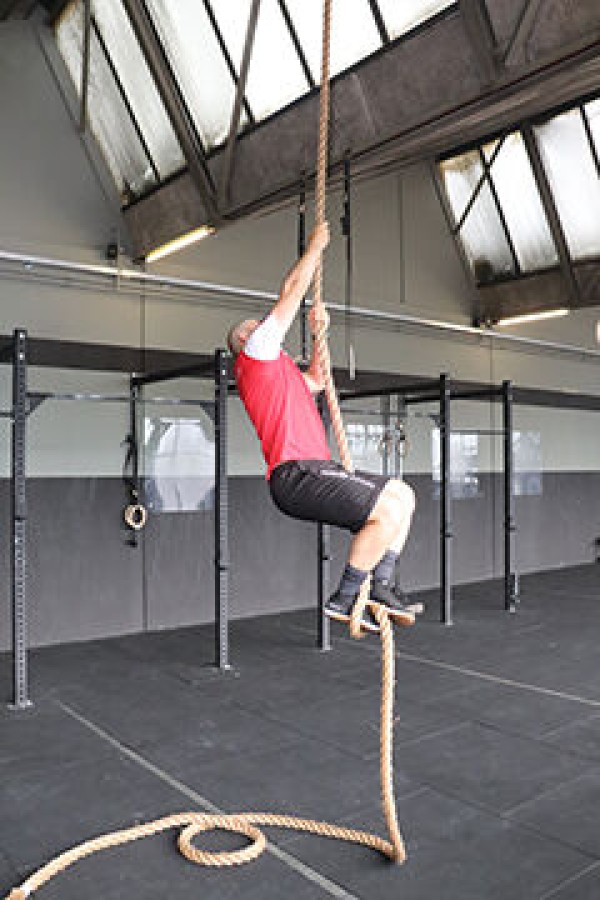
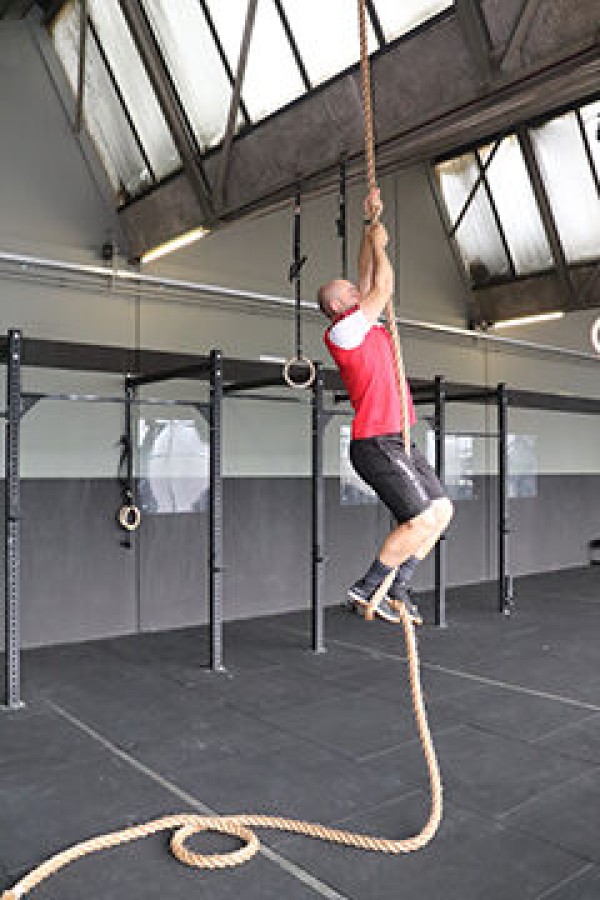
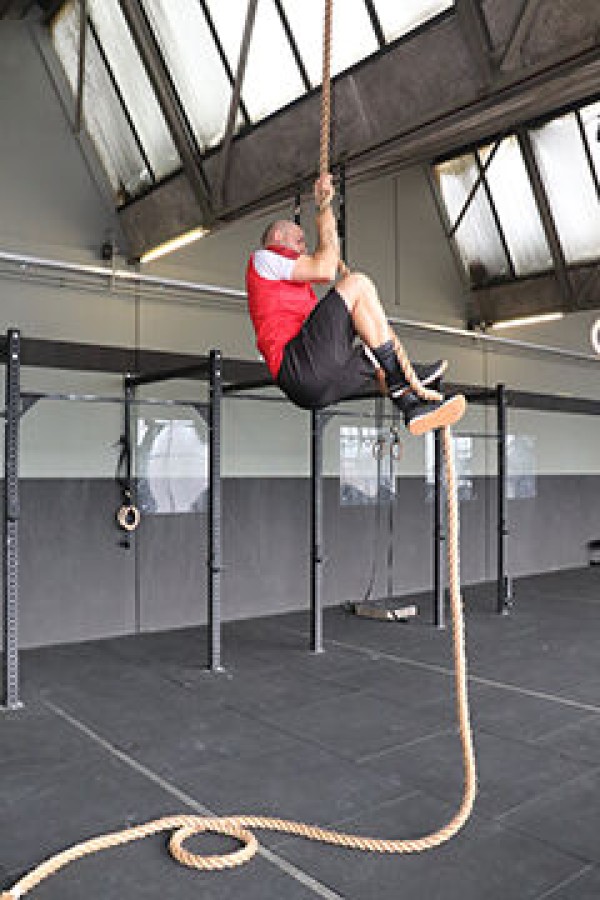

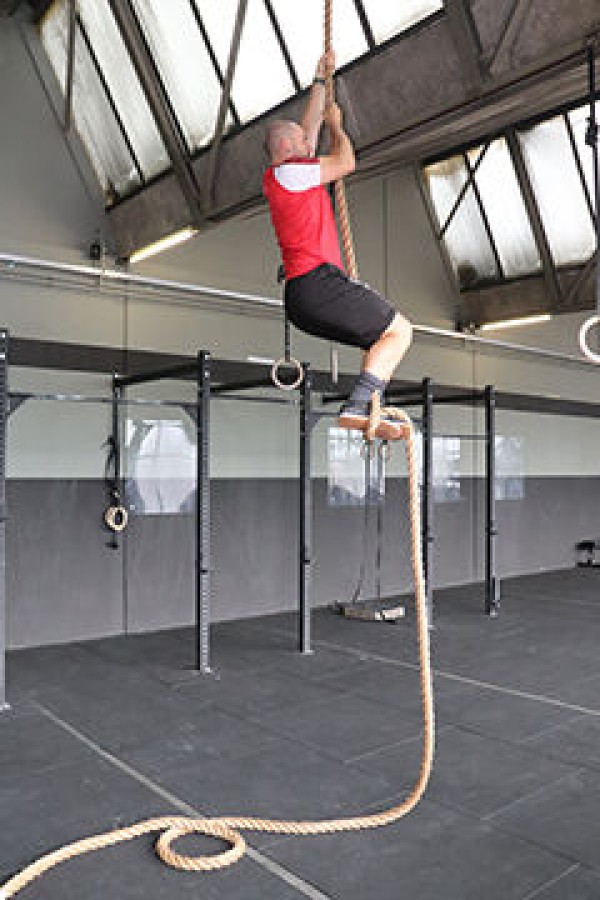
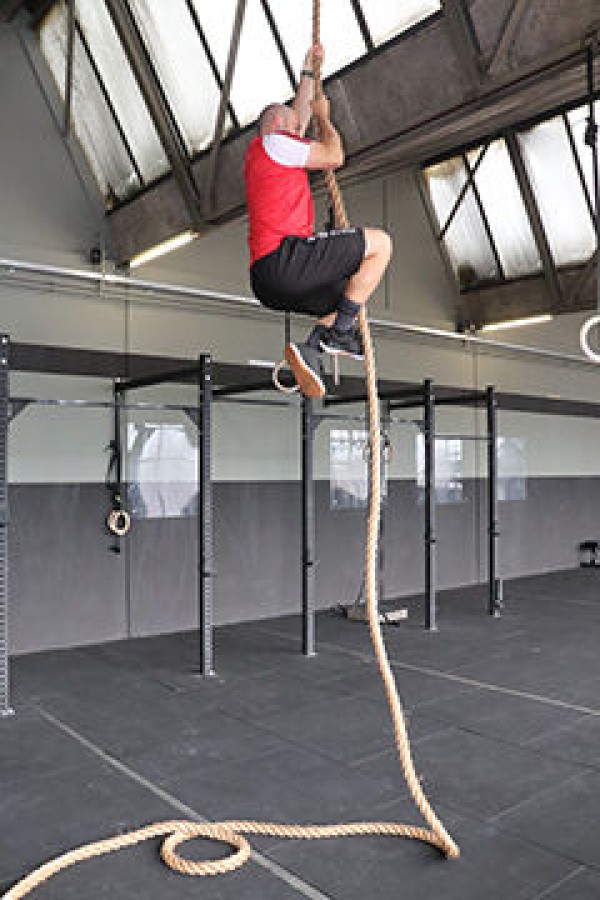
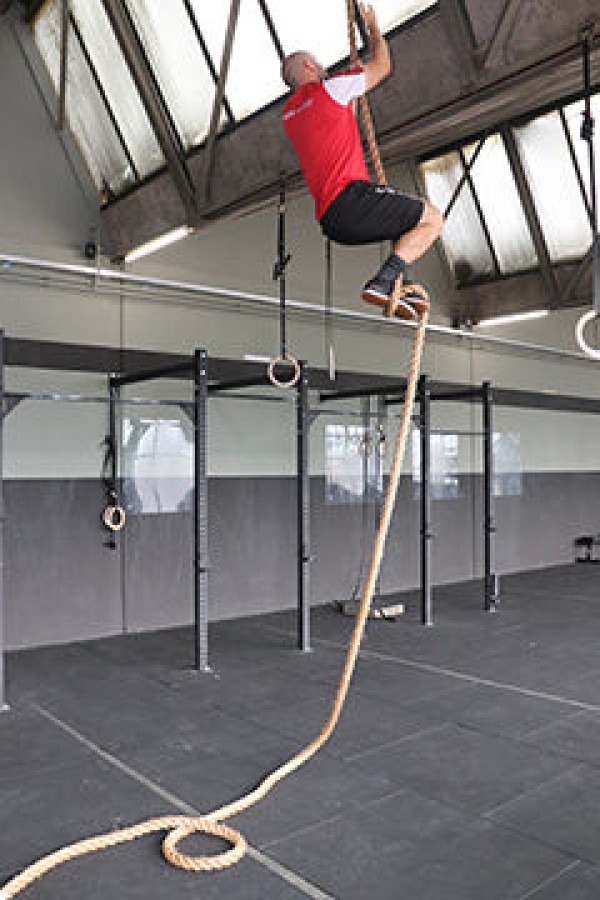
The rope is climbed up to the mark, with the S-wrap and J-hook techniques being the most common climbing methods. In the S-wrap technique, you grab the rope with your hands (close together) as high up as possible, keeping the rope between your thighs. The rope is then wrapped around the weak leg. The rope practically runs once around the calf and finally over the foot further down (S-shape). With the other (strong) foot, step on the rope that has been placed on the weak foot and lock it. Support yourself with the tips of your toes to grab the rope again with your hands (one after the other), preferably at the highest point. Now let go of the rope with the foot clamp grip and pull your legs upwards so that your knees and elbows are almost at the same height. The rope can then be locked again with the feet as described above. With the J-hook technique, you stand next to the rope at the start. Here too, you then grab the rope as high as possible. The hands are close together, which stabilises the entire body. Now pull your leg up to your chest, with the rope running to the left of your body. With the right
foot, grab the rope under the left foot and place it on the left foot to secure it. This creates an angle of over 90 degrees in the rope (J-shape). Once the rope is fixed to the foot, reach up again with your hands one at a time and the process starts all over again (you can switch sides).
Harden:
Additional weight (on the legs and/or arms).
1 climbing rope
2-4 weight cuffs/1 weight waistcoat ► Make the exercise more difficult (additional weight)
Kniebeuge ► air squat
Power
Individual work

Stand with your feet shoulder-width apart, bend your knees to approximately a right angle at the knee joints (buttocks approximately at knee height), arms supported on your hips or in front of you at chest height, hold the position (deep squat).
Attention:
Move your buttocks backwards, not your knees forwards. Keep your knees behind your toes. Keep your back straight at all times; a support for your heels makes the exercise easier.
Lighten:
Do not lower your buttocks too low (greater angle at the knees).
Harden:
Hold additional weight (on your shoulders, in front of you or with your arms hanging in your hands); unstable support.
1 soft mat (small)/raised surface ► make the exercise easier (position)
1 weight vest/(medicine) ball/weight disc/sandbag/2 dumbbells ► make the exercise more difficult (additional weight)
1 balance cushion/balance board ► make the exercise more difficult (unstable surface)
Squat ► back squat
Power
Individual work
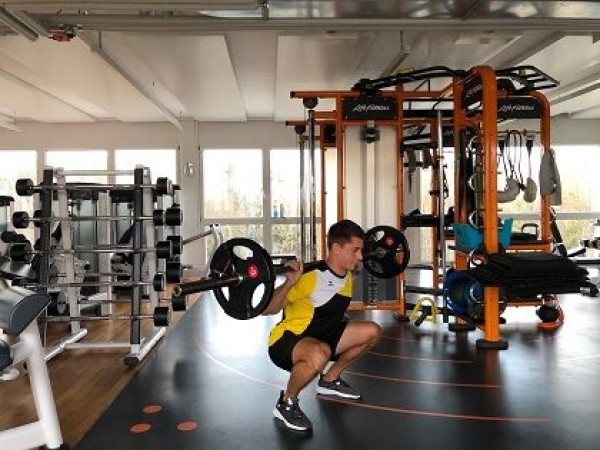
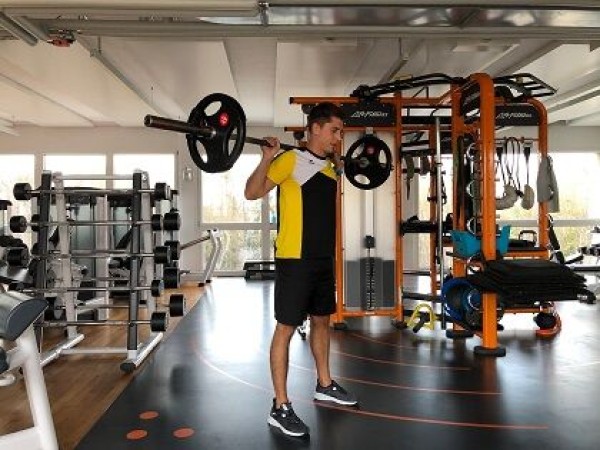
From an upright, shoulder-width stance with the barbell on your back, bend your knees and lower your buttocks as far as possible without losing stability in your back. Then push the weight back up to the starting position in a controlled manner (straighten your legs).
Starting position:
- Feet about shoulder-width apart, feet pointing slightly outwards
- Barbell placed on the upper back
- Abdominal and gluteal muscles tensed
- Gaze (always) straight ahead in a neutral position
Finishing position:
- Knees bent
- Buttocks back, not knees brought forward (sitting backwards)
- Back straight
Attention:
Distribute weight over the whole foot, push knees outwards (no tipping inwards). A support for the heels makes the exercise easier
1 Langhantel
Squat ► dumbbell squat
Power
Individual work
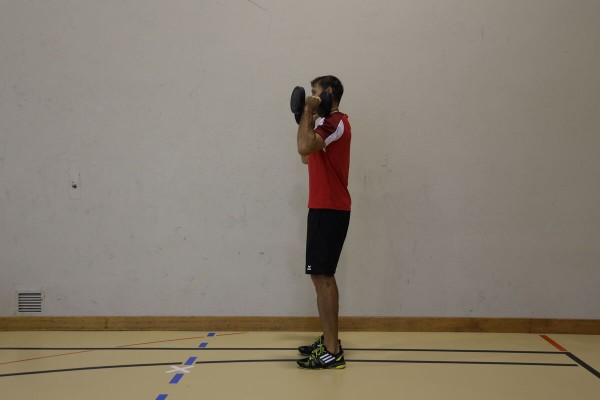

Stand shoulder-width apart, grasp weights (dumbbells/kettlebells) with one hand each, arms bent so that the elbows are practically at shoulder height and pointing forwards (hold dumbbells/kettlebells next to the respective ear). Bend your knees to approximately a right angle at the knee joints (buttocks at about knee height) and stretch back to the starting position.
Attention:
Move your buttocks backwards, not your knees forwards. Keep your knees behind your toes. Keep your back straight at all times (tense your core), distribute your weight over your entire foot, push your knees outwards (do not tilt them inwards). A support for the heels makes the exercise easier.
Lighten:
Do not lower the buttocks too low (greater angle in the knees); lighter or no weight.
Harden:
Stable support.
2 dumbbells
1 soft mat (small)/raised base ► make the exercise easier (position)
1 balance cushion/balance board ► make the exercise more difficult (unstable base)
Squat ► feet together squat
Power
Individual work
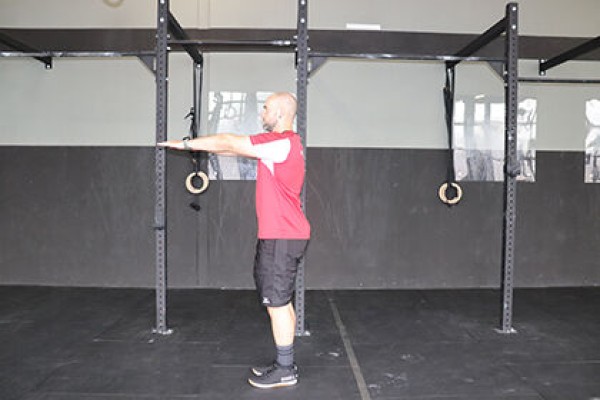
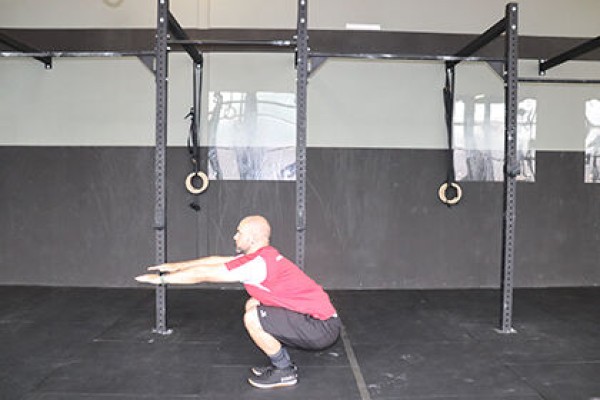
Stand upright with closed legs (feet together), arms pointing diagonally backwards and downwards. Bend your knees to approximately a right angle at the knee joints (buttocks at about knee height) and at the same time move your arms forwards (pointing diagonally downwards at the front). Then straighten your legs back to the starting position and move your arms behind your body again.
Attention:
Push your buttocks backwards, not your knees forwards. Keep your back straight at all times (keep your torso tensed), distribute your weight over your entire foot, keep your knees together during the exercise.
Lighten:
Do not lower your buttocks too low (greater angle in the knees); more support from the arms (momentum).
Harden:
Arms supported on the hips or crossed behind the head; hold additional weight (on the shoulders or with hanging arms in the hands).
1 weight vest/barbell/sandbag/fighting backpack/2 dumbbells ► Make the exercise more difficult (additional weight)
Squad ► front squat
Power
Individual work
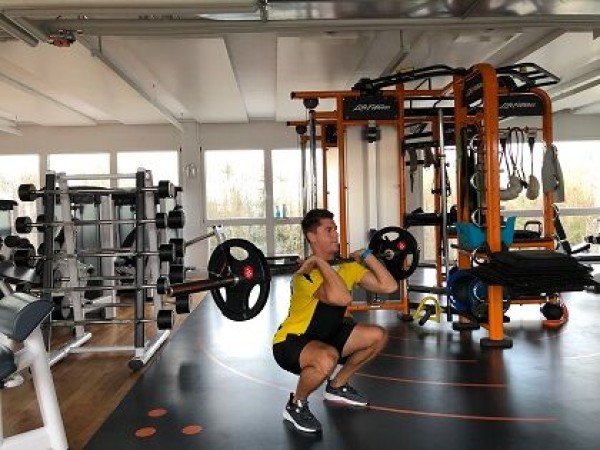
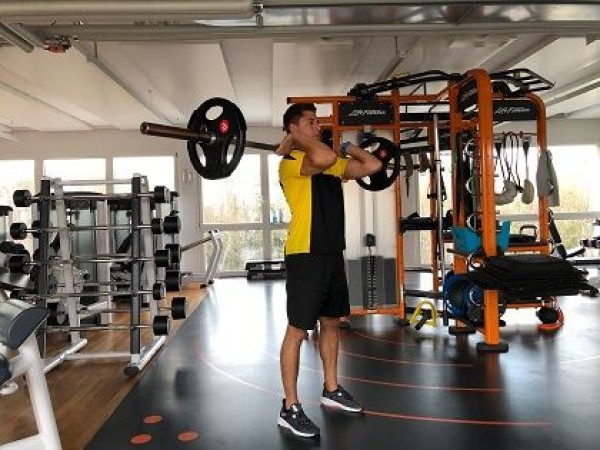
From an upright shoulder-width stance with the barbell placed on your shoulders in the front position, bend your knees and lower your buttocks as far as possible without losing stability in your back. Then push the weight back up to the starting position in a controlled manner (straighten your legs).
Starting position:
- Feet about shoulder-width apart, feet pointing slightly outwards
- Barbell rests on the shoulders
- Abdominal and gluteal muscles are tensed
- Look (always) straight ahead in a neutral position
Finishing position:
- Knees bent
- Buttocks back, not knees brought forward (sitting backwards)
- Back straight
Attention:
Distribute weight over the whole foot, push knees outwards (no tipping inwards). A support for the heels makes the exercise easier
1 Langhantel
Squat ► goblet squat
Power
Individual work

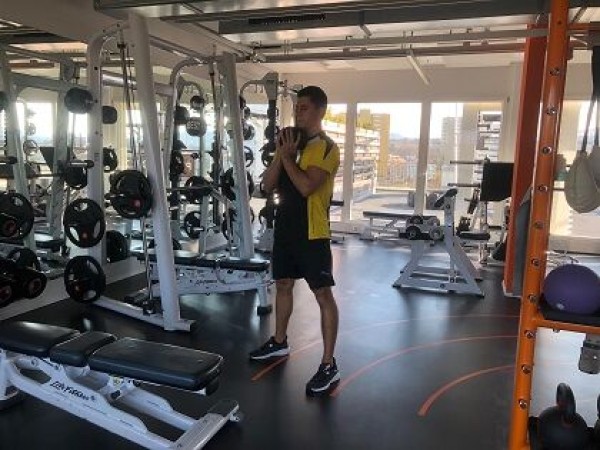
From an upright, shoulder-width stance with the weight (dumbbell or kettlebell) in your hands in the front position, bend your knees and lower your buttocks as far as possible without losing stability in your back. Then push the weight back up to the starting position in a controlled manner (straighten your legs).
Starting position:
- Feet about shoulder-width apart, feet pointing slightly outwards
- Hold the weight in front of your chest with both hands
- Tense your abdominal and gluteal muscles
- Look straight ahead (always) in a neutral position
Finishing position:
- Knees bent
- Buttocks back, not knees brought forward (sitting backwards)
- Back stretched
Attention:
Distribute weight over the whole foot, push knees outwards (no tipping inwards). A pad for the heels makes the exercise easier
1 dumbbell/kettlebell
Squat ► overhead squat
Power
Individual work
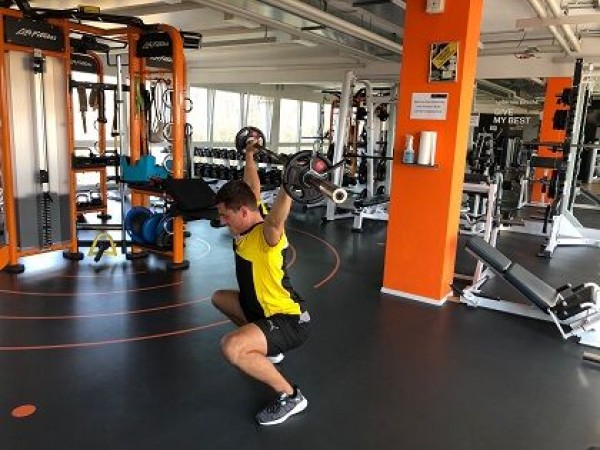

Stand upright (slightly wider than shoulder width) with the barbell overhead (arms almost straight in a V-position and held high), bend your knees and lower your buttocks as far as possible without losing stability in your back. Then push the weight back up in a controlled manner to the starting position in the standing position (straighten your legs).
Starting position:
- Stand upright, legs slightly wider than shoulder-width apart, feet pointing slightly outwards
- Barbell overhead, arms almost straight and held high (V-position)
- Abdominal and gluteal muscles are tensed
- Look straight ahead (always) in a neutral position
Finishing position:
- Knees bent
- Buttocks back, not knees forward (sitting backwards)
- Back remains straight
Attention:
This exercise requires extremely high levels of mobility and stability, which is why it is only suitable for advanced exercisers. Distribute the weight over the entire foot, push the knee outwards (do not tilt inwards).
1 Langhantel
Squat ► squat
Power
Partner work
1 trainee & 1 helper ► Note change of position
(= double the time required; for lesson planner see Organisation Kraft: Info button Execution)
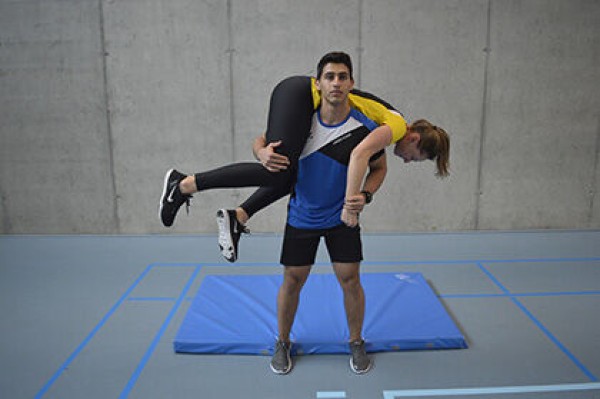
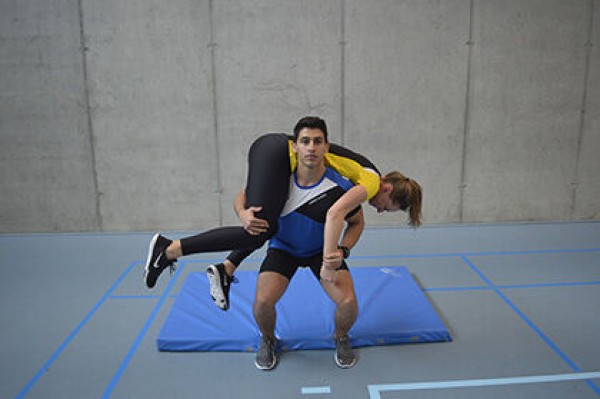
Exerciser: Holds their partner on their shoulders with their feet hip-width apart (e.g. Gamstrage grip), bend their knees to approximately a right angle in the knee joints, return to standing position.
Partner: Forms the weight/balance for the active participant (form binomials with approximately the same body stature).
Attention:
Knees always remain behind the toes and centred over the feet (do not tilt inwards). Distribute the pressure over the entire foot (heels always touch the floor; a support for the heels makes it easier to exercise/maintain the correct position).
Lighten:
Do not lower your body too low (greater angle in the knees).
Harden:
Additional weight.
1 soft mat (small) ► Make the exercise easier (position)
1 weight waistcoat ► Make the exercise more difficult (additional weight)
Squat ► squat
Power
Individual work
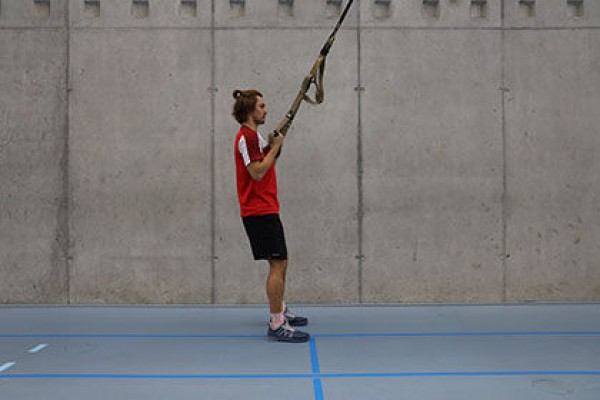
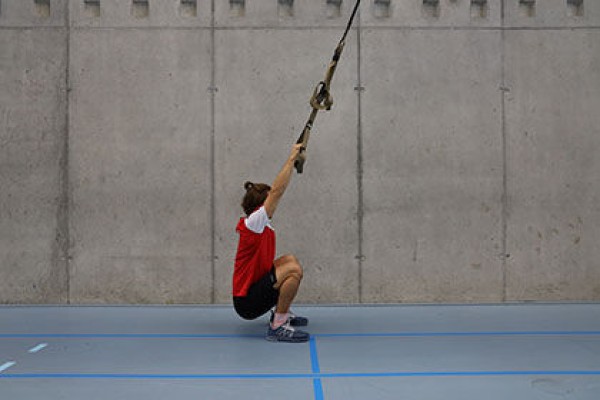
Progression I:
Adjust the sling trainer to a medium length (abdominal height), stand upright in front of the sling trainer with your feet shoulder-width apart, hold the handles at chest height with your hands, elbows bent, slings taut (move back slightly), bend your knees to squat position (approximately right angle at the knees), stretch your legs back to the starting position.
Progression II:
Analogue to progression I, but jump back from the squat to the starting position.
Attention:
Knees should not protrude over the tops of the feet (for both progressions).
1 sling trainer